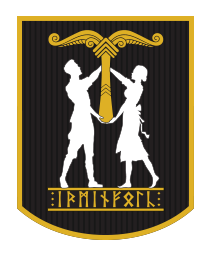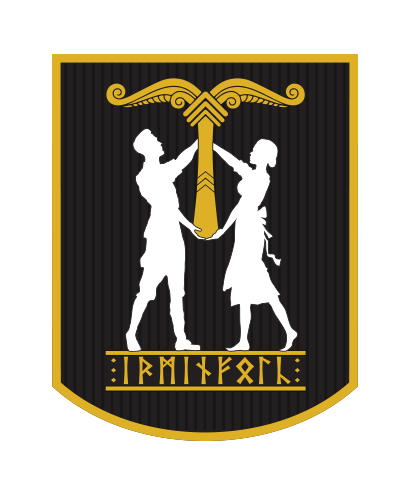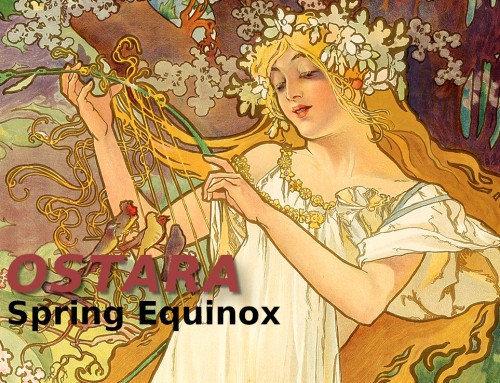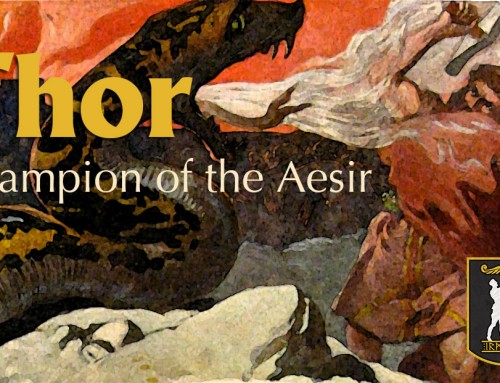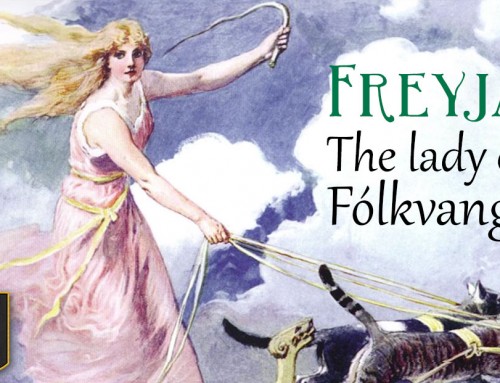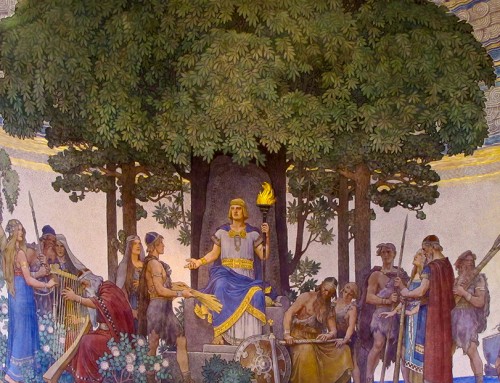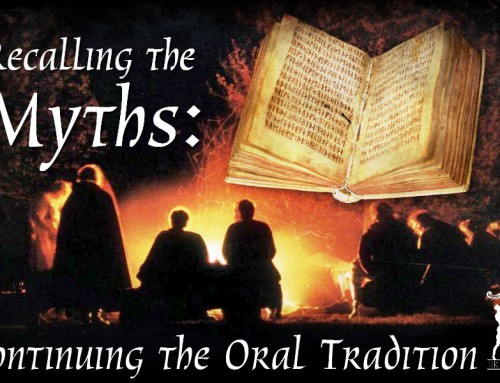The Rune that Never Was
By : Luther Kovac
Some commercially sold rune sets and books about rune casting include a “blank rune” that is supposed to represent Wyrd or “unknown destiny.” What some people new to the subject do not realize is that there has never been any evidence that such a rune ever existed. It is a modern invention that was added to the Futhark without regard to tradition or historical accuracy. Even the concept of a “blank rune” is an oxymoron, Runes are primarily defined as symbols that represent ideas and the “blank rune” is not a symbol at all, but a lack of one. Wyrd is an important concept for us, but could not have been represented by a rune that never was.
It is easy enough to refute the veracity of the “blank rune,” but to fully comprehend why it is so misguided we need to examine where it came from.
The idea of a “blank rune” can be traced to a book published in 1982 called The Book of Runes by Ralph Blum. In chapter two (p28) he admits that the “blank rune” was never part of the Futhark. The author claims to have purchased a rune set from a woman in Redhill, England which contained a “blank rune” that she described as “Karma” (p29). Blum decided to integrate it into his own system of rune casting based on his sadly limited knowledge of the Futhark and its history. Karma isn’t a Western concept, and while we may have certain parallels, it is not ours to take and shouldn’t be associated with the Futhark. Blum substituted Wyrd instead of Karma, but applied his own interpretation to that concept as well. He may not be the original fabricator of the “blank rune,” but he is the one primarily responsible for promoting it.
The “blank rune” was not the only problem with Blum’s book; there were other significant deviations from tradition and the worldview of our ancestors. He used the “I Ching” to help him understand the Runes, he tries to switch the focus of the Runes to new age concepts, and he rearranges the order of the Runes and the Aettir. His rationalization for this is disturbing. Perhaps the best way to convey why is with the author’s own words:
“When I began to work with the Runes, I had never seen a runic text, so I did not realize that I was breaking away from the traditional sequence of Freyer, Hagal and Tyr probably used by the early practitioners of runemal. But function determines form, use confers meaning, an Oracle always resonates to the requirements of the time in which it is consulted. I had to rely on the Runes themselves to establish their own order and to instruct me in their meanings.” (Ralph Blum, The Book of Runes p28-29)… “Now and then, when the flow dwindled, I turned to the I Ching and asked for a hexagram that revealed the essence of a particular Rune. The spirit of some of those readings is incorporated into the interpretations of the Viking Runes.” (Ralph Blum, The Book of Runes p31)
In other words; he was too lazy to do even basic research about the Futhark before he began his work, so instead he used an ancient Chinese divination system to gather the required information. He then justifies this by telling us the world has changed. So instead of following the Old Religion and the traditions developed by our people for well over a thousand years, we’re supposed to do it his way based on his ignorance and a Chinese Oracle.
This is wrong on so many levels that it is difficult to confine my response to the space available. I’ll start with using the I Ching as a tool for interpreting European Paganism. I have no problem with the I Ching and I actually have a healthy respect for Taoism. Its practical application can be seen in Sun Tzu’s The Art of War and the basic logic can be effectively applied across the boundaries of culture and time, but its spiritual significance is something else entirely, and the accuracy of its Western interpretations are suspect.
The I Ching is a product of a different people and a different culture, so understanding it necessitates understanding when it was written, who it was written by, and how their specific circumstances affected their worldview. Unfortunately most Westerners fail to take this important step; instead they butcher the Asian concepts then try to squeeze them into the framework of modern social theories. This is why I always preferred discussing Eastern philosophy with my Asian martial arts instructors instead of the European ones, the difference in their perspective was pronounced. The same problem is occurring with European Paganism. It seems bizarre that anyone can truly believe that Odinism was about political correctness and pacifism, but the idea is being pushed in much the same way that they force it onto Eastern philosophy.
Ralph Blum mentions the I Ching repeatedly and also promotes the concept of the “Spiritual Warrior,” which appears to be constructed using aspects of Buddhism along with other Asian ideas that Westerners frequently misinterpret. To the best of my knowledge the Vikings were not Buddhists, so this approach doesn’t impress me. If we are serious about understanding the Runes, from either a historical or religious perspective, it makes more sense to do so through the worldview of the people who created them.
The spiritual aspects of the Runes are just as important as the historical. In reconnecting with the ways of our ancestors we hope to better understand ourselves, and to fill an emptiness caused by the shallowness of modernism. While the ways of other folks can contain logic and wisdom, they are unlikely to help us find the soul of our own people. Like other elements of European Paganism, the Runes are our own; a part of us in a way that the traditions of outsiders could never be.
One excuse used by people who alter our traditions is that there are gaps in our knowledge about Norse/Teutonic Paganism. While there are certainly things that we do not know, that is no justification for changing the things that we do know about. As far as making substitutes for what might be missing, there are a couple of things to consider. First is whether or not the information is truly missing. There is more information available than most people realize. Once the nonsense is sifted through (there will be a lot of it), then acquiring access to old books and corresponding with experts might be necessary. Not all of the information will be available in the languages you are familiar with, but that obstacle can be overcome.
Another option is exploring the Pagan traditions of kindred European folk. There was a lot of overlap between Europe’s various people and many traditions have similar origins or parallel meanings. If borrowing a concept or ritual is necessary it should be taken from a kindred people who were close to us and had shared experiences, not from some far away people with a far different history. It is also worth researching Pagan European practices that were stolen by monotheists in order to see if they might be reclaimed, but the first step should always be a very serious attempt to research Norse/Teutonic tradition for what you are looking for. Much was lost, but much has also been recovered. Inventions like the “blank rune” are unnecessary as well as disrespectful. If one believes that there is power in the ancient ways and symbols of our ancestors, then fabricating them should never even be considered.
Blum’s book is primarily about using the Runes for divination, which is a very personal experience. It is certainly possible for someone to come up with a completely unique system that they are comfortable with, but like the so-called “blank rune,” it would not be part of Odinist tradition. If someone is looking for something in addition to the basic Runes, there were other ancient symbols used outside of the Futhark; for example, the Valknut and several types of Sonnerad (including the Schwarzesonne). The Runes are also the foundation for symbols that expand into different concepts, such as the “Vegvisir” and variations of the “Aegishjalmur.” The lore is available; the concepts more familiar than we might realize. Our ancestors are and always will be part of us, and our culture is still rich in their history and tradition.

